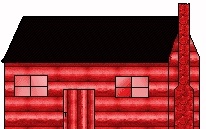The Township of Red House

RED HOUSE was formed from Salamanca, November 23, 1869. The name of Red House was derived from a house which stood upon the bank of the Allegany, just below the mouth of Red House Creek, and was painted red. The raftsmen who navigated the river at an early day named an eddy in the river at this point Red House Eddy, the name being suggested by the same house. The creek received its name from the eddy, and the town from the creek. The first town officers were F. Strickland, Supervisor; T. E. Bristol, Town Clerk; John Sharp; F. F. Deyo and S. D. Woodford, Justices of the Peace; Abner Brown, Commissioner of Highways; E. R. Kelly, Nelson Frink and F. Strickland,Assessors; F. F. Deyo, J. P. Eighme and I. N. Crosby, Inspectors of Elections; Daniel Carr, Collector; J. C. Wright, Overseer of the Poor; and Daniel Carr, Albert Sheffield, S. F. Pease, Wm. Critchell and Wm. Backus, Constables. The town lies upon the south border of the county, a little west of the center, and contains 36,392 acres. The surface is mostly a broken and mountainous upland, the highest summits being 800 to 1000 feet above the valleys. The streams are the Allegany River, which crosses the north-west corner, and Big and Little Red House Creeks, which unite near their intersection with the Allegany. The head waters of Quaker Run are in the south-west part. The soil is a clay and sandy loam. But little of the town is under civilization, by far the larger portion being in a wilderness state. There are seven saw mills and three shingle mills in the town, which is rapidly clearing off the timbered portion. There are four schoolhouses on the town, one of which is an Indian school.
The Atlantic and Great Western R. R. crosses the northwest corner of the town in close proximity to the Allegany.
The population in 1870 was 407, all of whom were white, except forty, native.
Red House, (p.o.) situated on the Allegany, in the northwest corner of the town, is a station on the A. & G. W. R. R., and contains a hotel, store and a few dwellings. It lies wholly within the Allegany Reservation.
Settlement was commenced on Little Red House Creek, in 1828, by Darius Frink, a native of Sterling, Conn., who moved to the town of Carroll, Chautauqua county, in 1827, and the following year to this town. Nelson Frink, son of Darius, came with his father, and is now the oldest resident in the town. He has lived at his present residence on Big Red House Creek, three miles from the station, for the past twenty-one years.
The second settler in the town was James Rosenberry, a native of Butler Co., Pa., who removed to Great Valley and located on Great Valley Creek, about seven miles above Ellicottville, in the month of December, 1814, and the following year to Little Valley, now Salamanca. In the spring of 1833 he removed to his present residence in Red House. Other early settlers in the town were L. Whaley, Hubbard Clark, William Conn. and Abner Thomas. The first school house was built on Little Red House Creek in 1851. Caroline Barns was the first teacher. The first saw mill was erected on the same stream in 1849, by Marsh & Frisby.
Transcribed by Jacqueline (Evens) Allen
from Child's Gazetteer